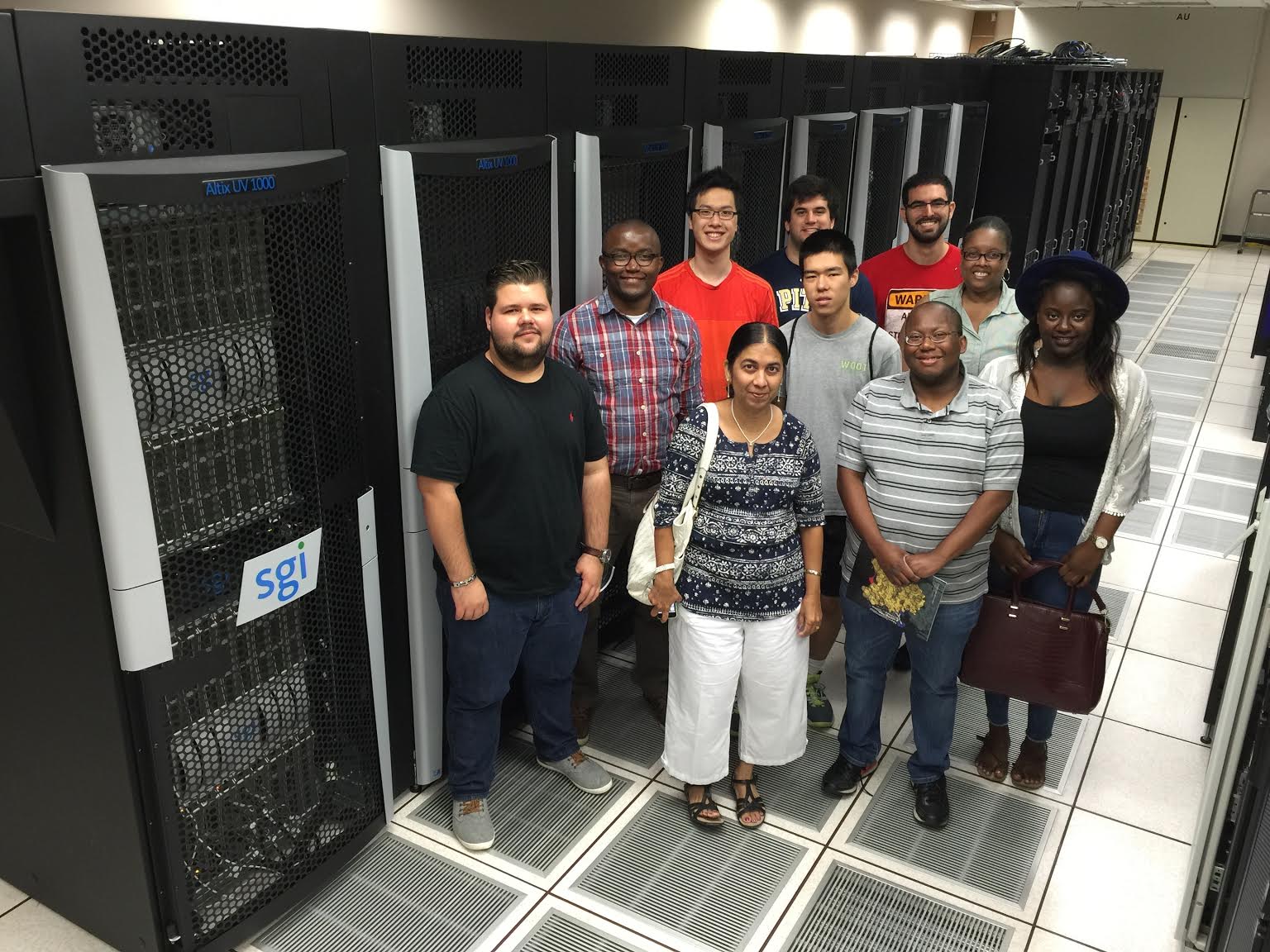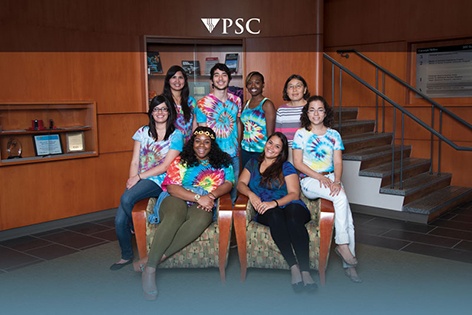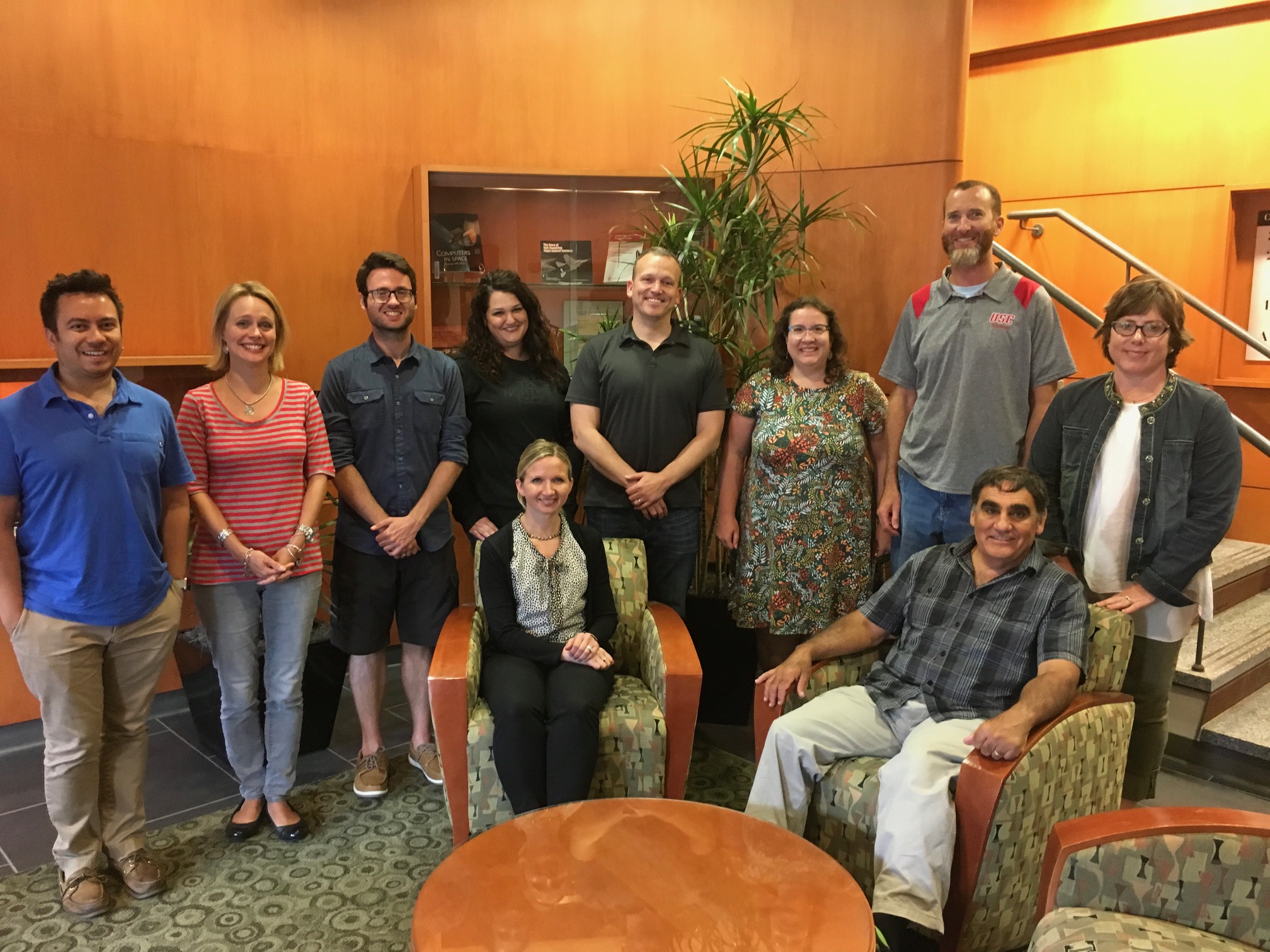Program marks 15 years of offering bioinformatics curriculum to high school teachers, opening new career paths for students
Amanda Sciorillo can’t remember when she first decided she wanted to be a teacher. Back as far as she can recall, and into high school, it seemed inevitable.
“I was volunteering in elementary school a couple of days a week in high school,” she says. “I did love it; I liked working with the kids. I love the thought of knowledge and learning and sharing that knowledge with other people.”
Maybe, then, it comes as a surprise that Michael Giles, who taught her biology in her 2013 sophomore year at PA Cyber Charter School, pitched her a different kind of class—and ultimately a different career. Giles was teaching a unique STEM (Science, Technology, Engineering and Math) education class. It focused on the usual questions in biology—how organisms reproduce, grow, live, interact, get sick and so forth. But it did it in a way that is relatively new to science, let alone high school instruction: Can we gain insight into these ages-old questions by studying the numbers associated with genetic data? Can the genetic code be read by computers in ways that human eyes could never untangle?
It’s called bioinformatics, and it is quite literally taking over the biological sciences.
“I suggested she take the class because she just showed so much interest in biology,” Giles says.
When Pallavi Ishwad first showed up to work at the Pittsburgh Supercomputing Center (PSC), her mission was not yet entirely defined.
“I joined PSC as an outreach specialist in 2007,” Ishwad says. “Joel Stiles was there at the time; he just said, ‘Use your background and figure out how you want to go about outreach.’”
Stiles, the late director of the National Resource for Biomedical Supercomputing at PSC, was in charge of an ambitious program to bring the benefits of high performance computing to biologists, including building better computer “models” for simulating cellular processes, recreating the motions and chemistry of biomolecules in the computer and of course bioinformatics.
A centerpiece of the program was the National Institutes of Health-funded Minority Access to Research Careers (MARC) program. MARC was a unique combination of supercomputing and teaching that sought to help minority-serving institutions (MSIs) offer the same kinds of bioinformatics classes being pioneered at much-better-funded, top-ranked colleges and universities. The program had a “teach a person to fish” approach designed to give faculty at MSIs the background in bioinformatics needed to design and launch full curricula that prepared their students for a job market in the biological sciences that increasingly expected graduates to have a working familiarity with the field.
At the time PSC’s Hugh Nicholas and Alex Ropelewski were running MARC. Ishwad sat down with them and with Stiles, to talk about its potential at the pre-college level.
“I looked at this program and said, ‘This is interesting,’” she says. “Why not take it … and make it compatible with high school requirements?” The idea was to become BEST: Bioinformatics Education for STudents, on offer to teachers throughout the Pittsburgh region.
Giles himself was a newcomer to bioinformatics when he first heard about BEST.
“One of the supervisors started circulating a request to see if anybody was interested in … teaching bioinformatics,” he says. “I said, ‘Let me give it a shot.’” He entered the first cohort of high school teachers in BEST.
The content took him a bit by surprise. A biology and chemistry major, Giles was a latecomer to teaching. He’d spent most of his career in the private sector, as an environmental scientist in the leather industry. He’d expected bioinformatics to be about applying computers to biological problems in general—not unlike Stiles’s larger program. But the fact that genetics was the centerpiece in the field—that computers had revolutionized the study of genetics—was new even to him.
“I studied it for about a year,” including an intensive two-week summer course at PSC, he says. “I met with Pallavi a couple of times … I talked with her on the phone a lot and I went through the whole curriculum a couple of times. I still never understood it until I got to the class” and started teaching.
Giles’s experience is common: It’s one thing to talk about how to use computers to mine genetic data for biological insights. But the light doesn’t tend to come on until people start to use (and teach) the technology. By one way of looking at it, this can’t be surprising: The whole point of bioinformatics is that the computers allow us to spot important patterns in the genes, their mutations and their activity in cells that are too big, too complex or too subtle for human minds to comprehend the raw data.
Ishwad herself had a bit of a learning curve in bioinformatics. Her background was in teaching, and though she was more than comfortable with the biological sciences she found—as have many scientists—that the new field would require new skills and particularly new ways of looking at old problems in biology.
The question was, could the material be taught to high school students?
The college- and university-level MARC program, again, was the template. Ishwad – pictured left with MARC students in the PSC machine room – studied MARC, visiting the colleges where it had spurred individual bioinformatics classes as well as multi-class curricula, to monitor the classes and talk with the faculty.

BEST had to do more than just offer the knowledge, though. A cohesive curriculum had been necessary for MARC to prepare college and university faculty to create the classes students needed to pursue bioinformatics careers. Even more so, a high-school level curriculum would have to be designed to get school boards to accept the crazy idea that this complex material was both learnable by high school students and the best way to introduce them to a growing future career path.
“The main thing that had to be done was the teachers had to be trained,” Ishwad says. “I had to sit down and talk the language of high school students [with them and] make day-to-day lesson plans that they could follow.” BEST needed to fill in details like independent study assignments that could be tested and graded. The teachers needed to be empowered to yell, “Stop!” if at any point the plan involved anything that wasn’t possible in high school—or in their particular schools.
“It was quite intense to actually build up the program.”
Sciorillo could have been Exhibit A in making the case that BEST worked and worked at the high school level.
“She just ate it up,” Giles says. “She ate that information up.”
A hallmark of BEST program high school classes, in addition to independent study, is mutual teaching and discussions among the students. This surprised Giles by being easier to enact than he’d expected. The students who signed up were enthusiastic, taking their assignments and mastering the art of accessing and making use of the online databases that bioinformatics scientists have created and offered, for free, to the open-research community. He would assign an individual project. The student would go off and study it using the same tools working scientists are employing. Then they’d come back and teach their classmates about what they learned.
“It has challenged students,” he notes, but that challenge paid off. “I gave my students … a lot of freedom within it—to the point where every last one of them ended up teaching major portions of the class … There were times when I barely said three words to introduce the class, and everybody started taking over.”
Sciorillo, like many of the students, proved such a self-starter. Not surprising given her past interests, she leaned into the teaching part. Giles noticed she had a real talent for reaching her classmates and particularly for getting shyer ones to open up.
But the databases.
“I had no idea what bioinformatics even meant,” Sciorillo says. “And then I started his class and he introduced us to different databases. And that’s what got me hooked.”
The class revealed a new world—and a world of possibilities—to her. DNA codes for dozens of species, including disease-causing genetic variants. Codes for the RNA copies of the DNA that the cell uses to build proteins that perform actions or interact with other genes and RNAs to change their behavior. Tools for analyzing this incredible mass of data. Other tools for visualizing the results in a way that enables the human eye to catch what’s important. Published papers—and yet-to-be-published preprints, literally science’s “first drafts”—describing new techniques, new findings, new ideas.
The flame was lit. A new life path opened.
“I wanted to be in those databases.”
Today, in its 15th anniversary year, BEST is somewhat changed from its original form. The ever-brutal competition for grant funding has transformed the intensive two-week teach-the-teachers sessions into a leaner three-day workshop.
“[We] coordinated … from the very beginning, so I supported Pallavi as much as I could, and what she was doing,” says Cheryl Begandy, who was leading PSC’s larger outreach effort at the time but was administratively separate from PSC’s National Resource for Biomedical Supercomputing. “When Joel [Stiles] untimely left us [in 2011], I just took over the administration of BEST under our STEM outreach.”
When Ishwad retired in 2017, Begandy stepped in to ensure that the program retained an advocate for funding, as well as within PSC. Today, the program is funded by the Commonwealth of Pennsylvania.
“I have no background in bioinformatics, no background in teaching; it’s really kind of out of my league,” Begandy says. “But we had three teachers who had been involved from the very beginning who were willing to work with us to do the workshop, teach the content.”
Those teachers are doing the heavy lifting in maintaining BEST. Giles, who’s now retired, spends a few days a month keeping the Web links current and maintaining other online items in the curriculum. Members of BEST’s inaugural class of teachers, Edwina Kinchington of the Pittsburgh SciTech School and Melissa Kavanshansky of Oakland Catholic High School had in addition already become instructors for the teachers, and so their role continued after Ishwad retired in 2017.

Pictured left are students from the BEST 2015 program, and the teacher cohort from 2018. The program continues to adapt and evolve, and PSC hopes for another 15 years of education and partnership. Still, like many university projects, BEST continues to rely on external funding. One big question to be answered is who will write the grants and teach the program when the current stars have retired.
“I’m glad that it has … sustained and moved on, and all the credit goes to Cheryl for that,” Ishwad says. “A lot of students who took the program have found new career paths.”

Amanda Sciorillo is now on one of those career paths. In her high school project, she studied how the cell uses a phenomenon called DNA methylation to tag genes for silencing. Organisms use gene silencing to avoid double-dosing on gene effects. For example, methylation can silence a gene in one of the two X chromosomes in women, so that those genes don’t flood their cells with twice the number of gene products as are in men’s cells, which only have one X. Gene silencing is also important in the development of some kinds of cancer, a phenomenon that Sciorillo studied in deadly glioblastomas in the brain.
In her junior year in high school, she started working in a lab at Children’s Hospital of Philadelphia, investigating a type of childhood tumor called neuroblastoma. Her lab experience and bioinformatics background helped her win a college scholarship for women in science. She majored in biochemistry at Marymount University in Virginia, from which she interned at the National Institutes of Health and, in her senior year, worked at the White House Office of Science, Technology and Policy. Today she’s a researcher at the Wistar Institute in Philadelphia, planning to go back to school and earn her doctorate, so she can run a lab of her own someday.
She’s still a teacher at heart, though.
“I always liked the idea of helping people to learn,” she says. “And the databases to me looked like being able to teach people and learn on a large scale … I decided that I really wanted to go into science and get some research published, build off of other people’s research and have people build off of mine.”
She’s in those databases.
